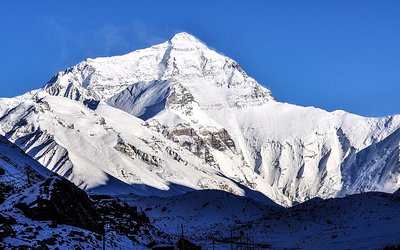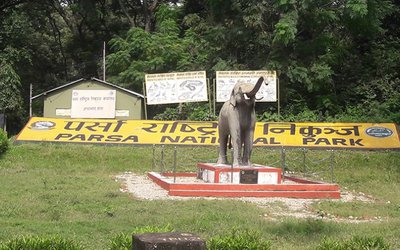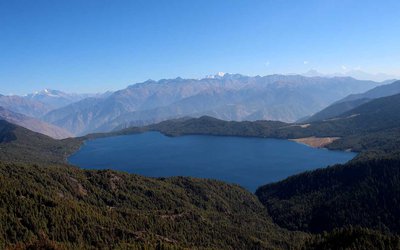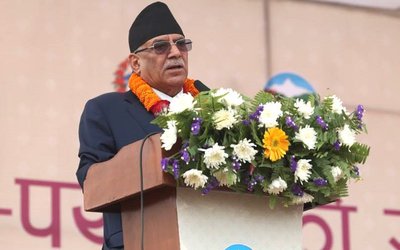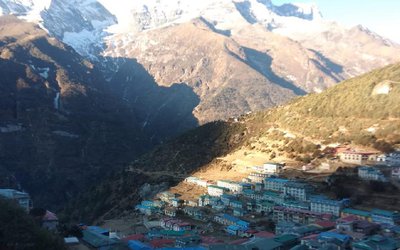Probably everyone has heard about the effects of climate change on melting glaciers high in the Himalayas, but how serious is it? To what extent does this affect present and future populations? And are modern strategies really doing something to work out an effective solution? The Himalayas and the vast Tibetan Plateau stretch to cover large parts of Bhutan, China, India, Nepal, and Pakistan. Together they form almost 100,000 sq Km of glaciers and hold the largest amount of water in ice form outside the polar regions (Bahadur, 1993). For such reason, scientists call it the third pole, but when it comes to clear and present threats from climate change, it ranks first. The whole area is essential to the low-lying populations. When the ice thaws and the snow melts every spring, the glaciers birth the great rivers of the region, the mightiest river system in the world: the Ganges, the Indus, the Brahmaputra, the Mekong, the Irrawady, the Yellow and the Yangtze. These and other main rivers have been estimated to sustain 3 billion people, nearly half of the world’s population (Abdukadir; et al., 2004). Monsoons are inconstant, filling rivers at timesand then leaving them dry, but the ice melt has always been regular and dependable in a region where water (or the lack of it) defines civilization.
According to Rijsberman (2006), most of South Asia is already in a state of water scarcity. What makes it even worse is that at the same time, the population in this part of the world is set to expand. Furthermore, economic growth increases competition for water used in agriculture and industry and this will contribute to widen even more the already substantial gap between water supplies and needs. With regards to this issue, a report from the international consulting group McKinsey & Company estimates that by 2030, India alone will have only 50% of the water it needs (McKinsey & Company, 2009). Most of Asia will witness a similar condition, but even more alarming is the fact that a warmer world will lead the whole globe to have 40% less water than it needs if nothing is done to change current consumption behaviours.
In analyzing the impacts of changing patterns of water access, decreasing availability and quality, and growing demand for water supplies significantly increase developing countries vulnerabilities by adding new challenges. For instance, vulnerable communities will be even more disadvantaged from water scarcity. Small farmers and the poor may have insufficient access to water sources to satisfy their livelihood needs.
Scientific studies indicate that the third pole is facing ‘great stress of decay and degeneration’ (Bahadur, 1993). In this regard, Kulkarni’s team[1] findings state that ‘the Himalayan glacier area has decreased from 5,866 square kilometres in 1962 to 4,921 square kilometres in 2004 — a ‘deglaciation’ of 16 per cent’, (Padma et al., 21-01-2010). Forecasts predict that by 2070 a 43% decrease in glaciated area, bringing along a considerable number of problems for the region (Walsh, 2009). One of the most immediate risks is the bursting of glacial lakes and flash flooding phenomena in high mountain states such as Bhutan and Nepal. The early stages of Himalayan melt will result in an increase of water flow and pressure within glaciers; when these give way, releasing huge amounts of water, entire villages could be instantly wiped out. Glacial lakes have formed in many places in the area left at the foot of retreating valley glaciers. An inventory compiled by ICIMOD in 2001 later identified 8,790 glacial lakes within selected parts of the Hindu Kush-Himalayas. More than 200 of the glacial lakes were considered to be potentially dangerous – that is, liable to burst out leading to a glacial lake outburst flood (GLOF) (Mool et al., March 2010). In 1985, one of the new glacial lakes burst, killed 19 people, and destroyed 30 houses, 14 bridges, and a hydroelectric plant.
Another major problem would be water scarcity. According to Mrs Jennifer Morgan, Director of the WWF Global Climate Change Programme, ‘the rapid melting of the Himalayan glaciers will first increase the volume of waters in rivers, causing widespread flooding, but in a few decades this situation will change and the water levels in rivers will decline, meaning massive eco and environmental problems for people in Western China, Nepal and Northern India’, (BBC News, 2005).
Given that a quarter of the people on Earth are sustained by Asia’s Water Tower, the cascading effect of most concern is food production. As indicated by D. Battisti and R. Naylor ‘there are 523 million people in Asia that are undernourished, and by 2040-2060, average summer temperatures across much of the Great Himalaya are projected to regularly exceed the warmest readings on record since 1900′ (Battisti et al., 2009). This data is even more relevant if we consider that about two thirds of the Asian population surrounding the Himalayas depends on subsistence farming. In other words, the rising of temperatures will increase the vulnerabilities of the poor rural communities.
In the long-run, the Himalayan region will face a severe drought problem, which will cause the farmland to dry up and the scarcity of drinking water. As stated by Prof. Dong Guangrong, Professor at the Chinese Academy of Social Sciences, ‘the rising temperature will thaw out the tundra of the plateau, turning it to desert. […] The melting glaciers will ultimately trigger more droughts, expand desertification and increase sand storms’ (Lean, 2006). The drought will therefore reduce land fertility as well as the area and quality of the pastureland. For instance, less grazing land means a decrease in milk production and a considerable lowering of the economic income from the selling of dairy products. In addition, as for most mountainous countries, hydropower is the major energy source for the Himalayan area, and a reduction of water would obviously result in a paralysis of the few industrial activities carried out.
The lack of water is also closely linked to the risk in terms of global security. In developing nations such as China and India, growing prosperity goes alongside with an increase in demand for water. This could therefore lead to border battles as well as internal civil conflicts for the control over water basins which, being so important to water-stressed regions, could bring nations to eventually use military power.
Besides the previous issues, there are also two important matters to be considered, economy and technology. The approach carried out by the Earth Summits in Rio de Janeiro (1992), Kyoto (2005) and Copenhagen (2009) led to a dead end. First of all, the summits put forward solutions which cost more than the problem they are meant to solve. It is estimated that if we don’t do anything about global warming, its damaging effects will cost the world about 3 trillion dollars a year by the end of this century. The possible solution which has been proposed by the industrialized nations to keep the average global temperature from rising any further is to cut carbon emissions, but, in order to do so, these countries would have to impose a huge tax on carbon-emitting fuels. According to the climate economist Richard Tol, by 2100 taxation will reduce the world GDP by 12.9% (Tol, 2009); a loss which would sums up to 40 trillion dollars a year.
Furthermore, there is technology to take into account. More than half of the world’s electricity still comes from coal, which is one of the main responsible for the emissions of carbon dioxide. Although studies have been made to develop alternative sources of energy, none of them are capable of replacing coal in the short term. Moreover, for emerging economies like those of China and India, which by the year 2005 were considered to possess a share of coal-based electricity respectively of 80% and 70% (Amatayakul et al., 2008), reducing the use of coal is defenitely not an interest.
The failure to adopt efficient strategies to tackle global warming has only increased the need of immediate intervention by the world leaders. The longer we wait to act a considerable change, the more carbon dioxide will be added to the atmosphere and the more expensive those changes will be. Instead of making carbon fuels more expensive, we should try to focus on reducing the cost of alternative forms of energy. This obviously goes along with the need of massive investments in R&D to work out solutions to end our addiction to fossil fuels. Furthermore, efforts should aim to make coal a fuel source that is free of (or very low in) carbon dioxide and other pollutant emissions. “Clean coal technology” or “carbon capture and sequestration” (CCS) may represent temporary solutions to reduce the environmental impact of coal energy generation by not releasing carbon dioxide into the air. The gas is collected, concentrated to liquid form, and pumped deep underground for permanent storage in natural geologic formations (Rice, 2009), but there is still more to be done.
To conclude, reducing carbon emissions would contribute to bound part of the negative effects of climate change and/or achieve some of the Millennium Development Goals (UN, 2010). For instance, reducing greenhouse gases emissions will give more time to Himalayan vulnerable communities in order to adopt strategies required to face the imminent water scarcity, while at a global level it will also help to create clean-energy jobs, ease political tensions tied to oil, and save money through energy efficiency. Not only would this cut down pollution and help to restore acceptable parameters to safeguard the world’s glaciers, but it would also help the nations to undertake a positive path towards a sustainable growth. By Eugenio Tamburrino Source>>
http://chimalaya.org/2011/04/05/climate-change-in-the-himalayas-lives-at-risk-2/
- TANAHU HYDROPOWER PROEJCT: A Significant Achievement
- Apr 15, 2024
- AMBASSADOR HANAN GODAR: Sharing Pain With A Nepali Family
- Mar 30, 2024
- VISIT OF KfW AND EIB TO NEPAL : Mission Matters
- Mar 25, 2024
- NEPAL BRITAIN SOCIETY: Pratima Pande's Leadership
- Mar 24, 2024
- NEPAL ARMY DAY: Time To Recall Glory
- Mar 15, 2024

